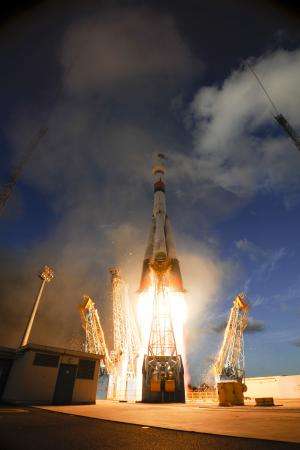Sentinel-1 opens its large radar antenna and solar wings

Following its launch yesterday, Sentinel-1A has performed a carefully choreographed 10-hour dance routine to open its large radar antenna and solar wings.
During the launch, the 12 m-long radar and two 10 m-long solar wings were folded up to fit into the protective Soyuz rocket fairing.
After being lofted to 693 km above Earth and released into orbit, the satellite gently 'tumbled' to stabilise before embarking on its elaborate dance routine.
The solar wings and radar opened together in a specific sequence that took around 10 hours to complete. As one of most critical stages in the life of the mission, it was choreographed to ensure that both deploy in the safest possible way.
The sequence also allowed power from the wings to be available as soon as possible so that the satellite was independent.
ESA's Sentinel-1 Project Manager, Ramón Torres, said, "This crucial and complex deployment sequence was analysed and dissected over and over again during the design phase.
"It was tested with perfect results in last month, but it is still a magic moment to know that it has happened in the sky.
"We now very much look forward to the end of the launch and early orbit phase planned for the coming Sunday, and then commissioning the satellite for operations.
"It is reassuring to know that our precious satellite in the safe hands of our colleagues at the European Space Operations Centre in Germany."
Provided by European Space Agency




















